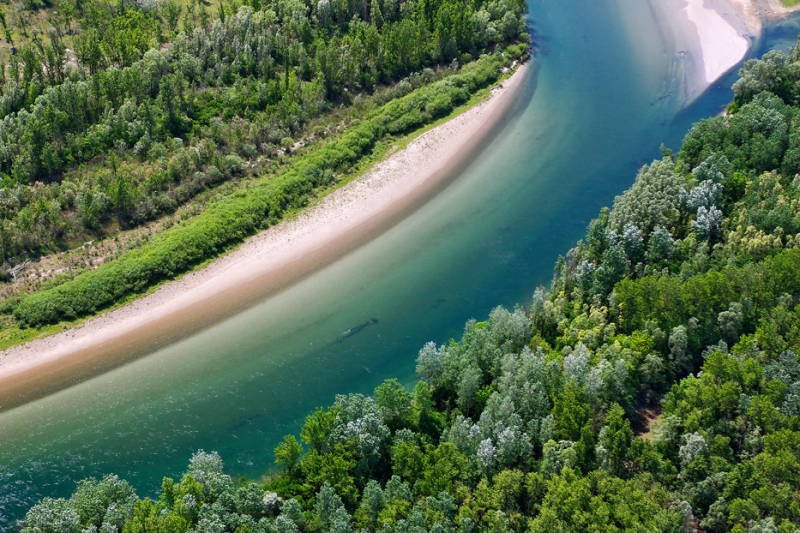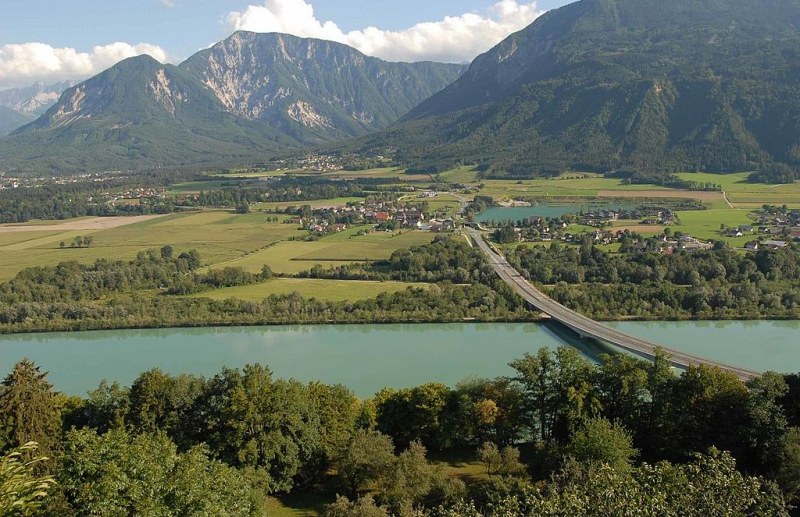Drava River

The Drava, often known as the Drave, is a river that flows through southern Central Europe. It is the Danube's fifth or sixth-longest tributary, after the Tisza, Sava, Prut, Mureș, and maybe Siret, with a length of 710 kilometers (440 miles) and 724 kilometers (450 miles) including the Sextner Bach source. And it is one of the longest rivers in Austria. The Drava drains around 40,154 km2 of land (15,504 sq mi). Its yearly discharge ranges from 500 m3/s (18,000 cu ft/s) to 670 m3/s (24,000 cu ft/s) depending on the season. Its source is in the Puster Valley of South Tyrol/Alto Adige, Italy, near the market town of Innichen/San Candido. The river runs eastward from Austria's East Tirol and Carinthia into Slovenia's Styria region. It then turns southeast, passing through Croatia and, after merging with its main tributary Mur, forms most of the border between Croatia and Hungary, before it joins the Danube near Osijek.
Hydroelectric power stations in Austria, Slovenia, and Croatia have exploited the Drava's natural fast path. Only tiny boats can navigate its upper sections, and larger craft may navigate it downstream from Donji Miholjac, Croatia. Invaders from the east, such as the Huns and Slavs, used the Drava valley as their main route into the Alpine kingdoms. Klagenfurt and Graz in Austria, Maribor and Ptuj in Slovenia, and Varadin and Osijek in Croatia are the principal towns along the Drava and its tributaries.
Length: 710 km











